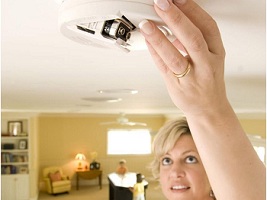The introduction of multi-criteria detectors has given purchasers increased flexibility and functionality in their fire detection systems. According to the latest IHS Fire Detection & Suppression Report, the global multi-criteria detectors market was worth $264.8 million in 2015. The market is expected to grow by a compound annual growth rate (CAGR) of 6.6 percent between 2015 to 2020. IHS found that multi-criteria detectors, which combine multiple detection technologies, have become more common in the fire detectors market for three main reasons.
Firstly, the increasing number of mixed-use facilities has created demand for detectors that can function in complex environments, while meeting the demand of multiple customers. For example, the increasing number of facilities that combine retail, restaurants, and lodging create unique challenges for building owners and fire detector manufacturers. IHS found that the risk of fire varies in each environment – each requiring a different type of detector. Combining multiple technologies into a single unit means that fire detectors will be able to meet the needs of various clients.
Secondly, IHS found that the trend to multi-criteria detectors is mainly caused by customers desire to reduce the number of detection devices installed in their facilities. The fact that fire systems in most instances continue to be a “must” purchase by law, means some end users want to see fewer detectors installed in their facilities. Because of this situation, multi-criteria detectors are more often being specified in projects where aesthetics are a concern.
Additionally, the price of multi-criteria detectors continues to decline, as more systems are installed and competition in the fire detection market increases. IHS found that declining prices are contributing to more rapid adoption of multi-criteria detectors, as some customers that were once priced out of this market have now started to realize the value of this detector type.








